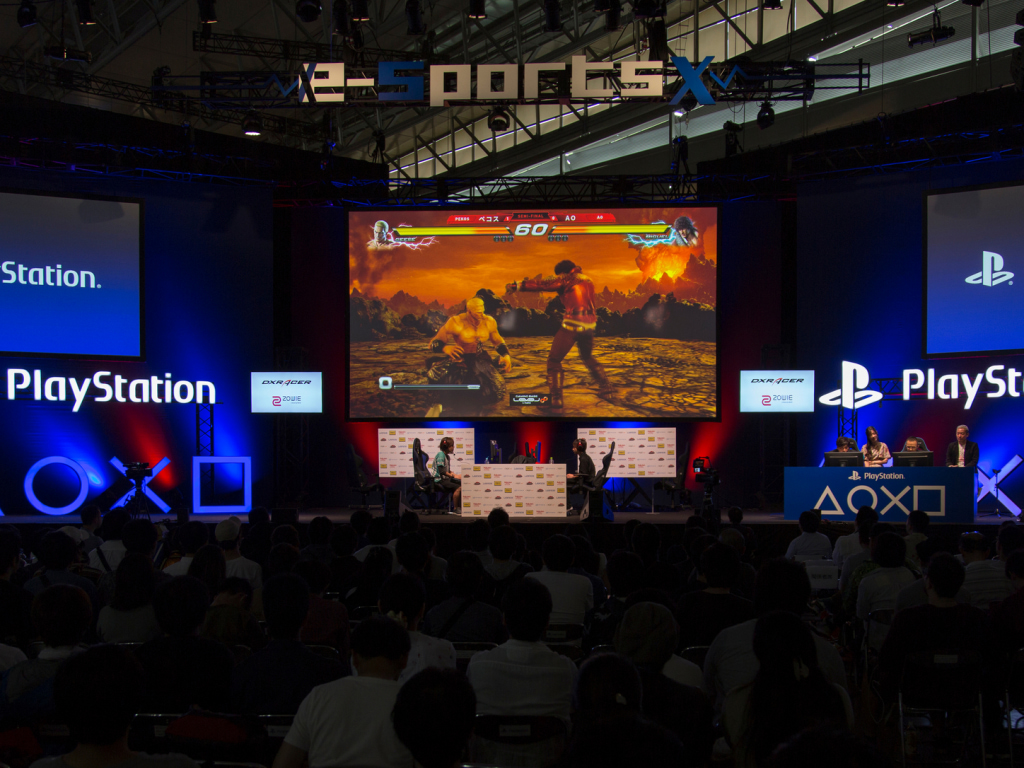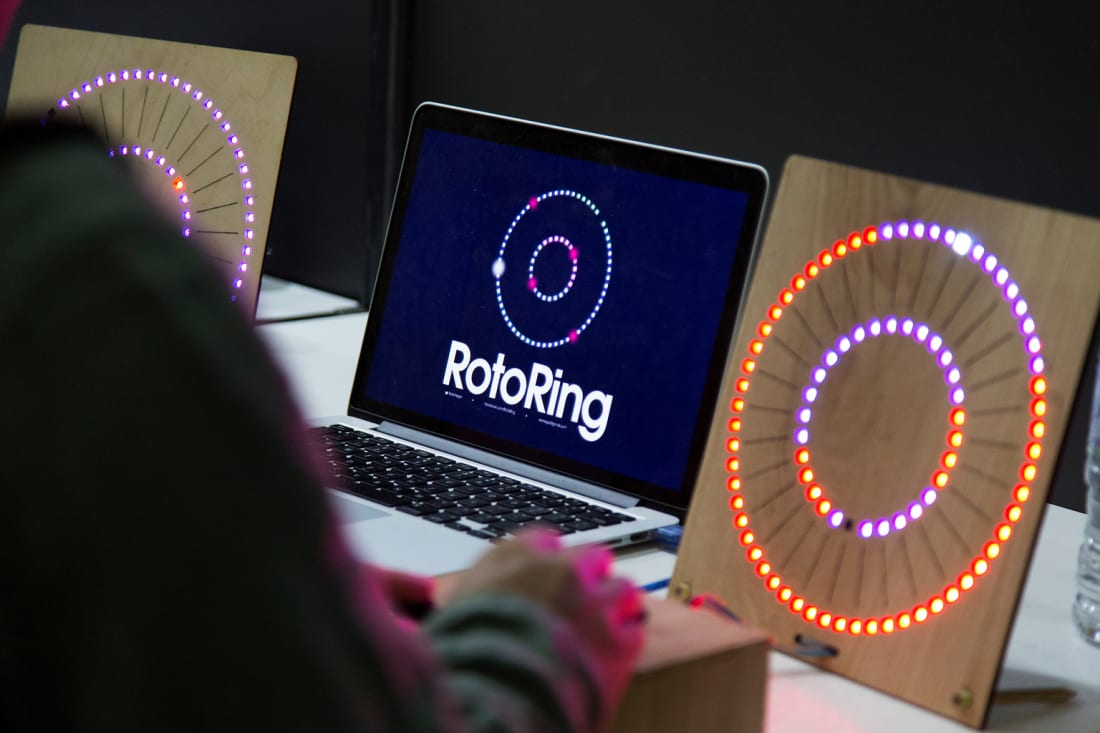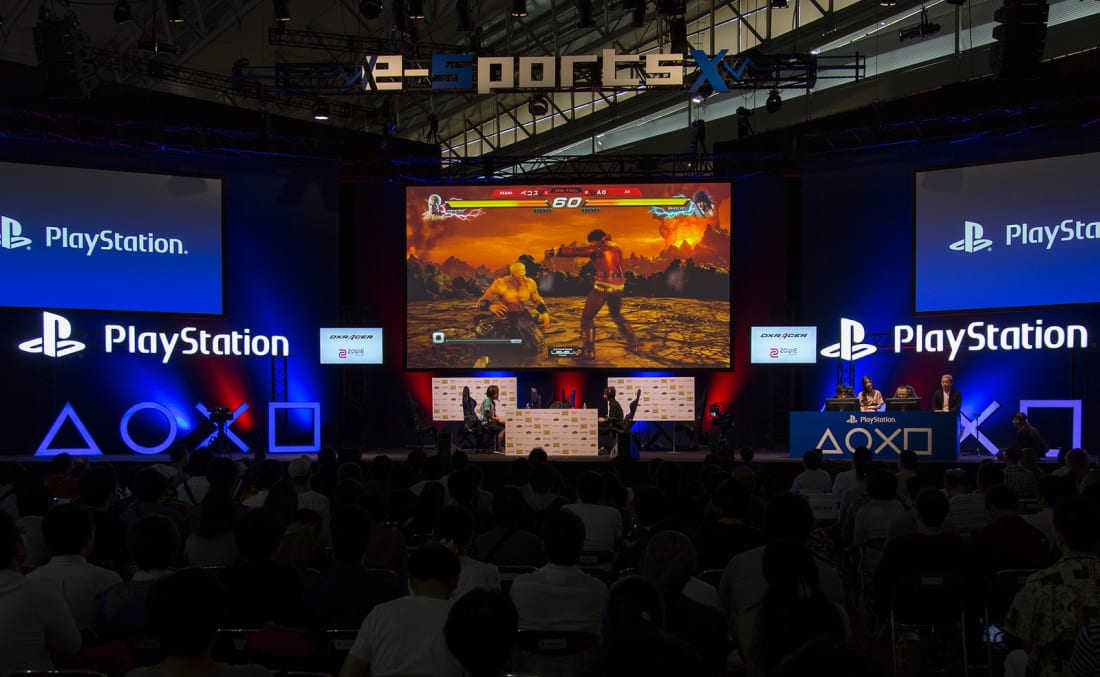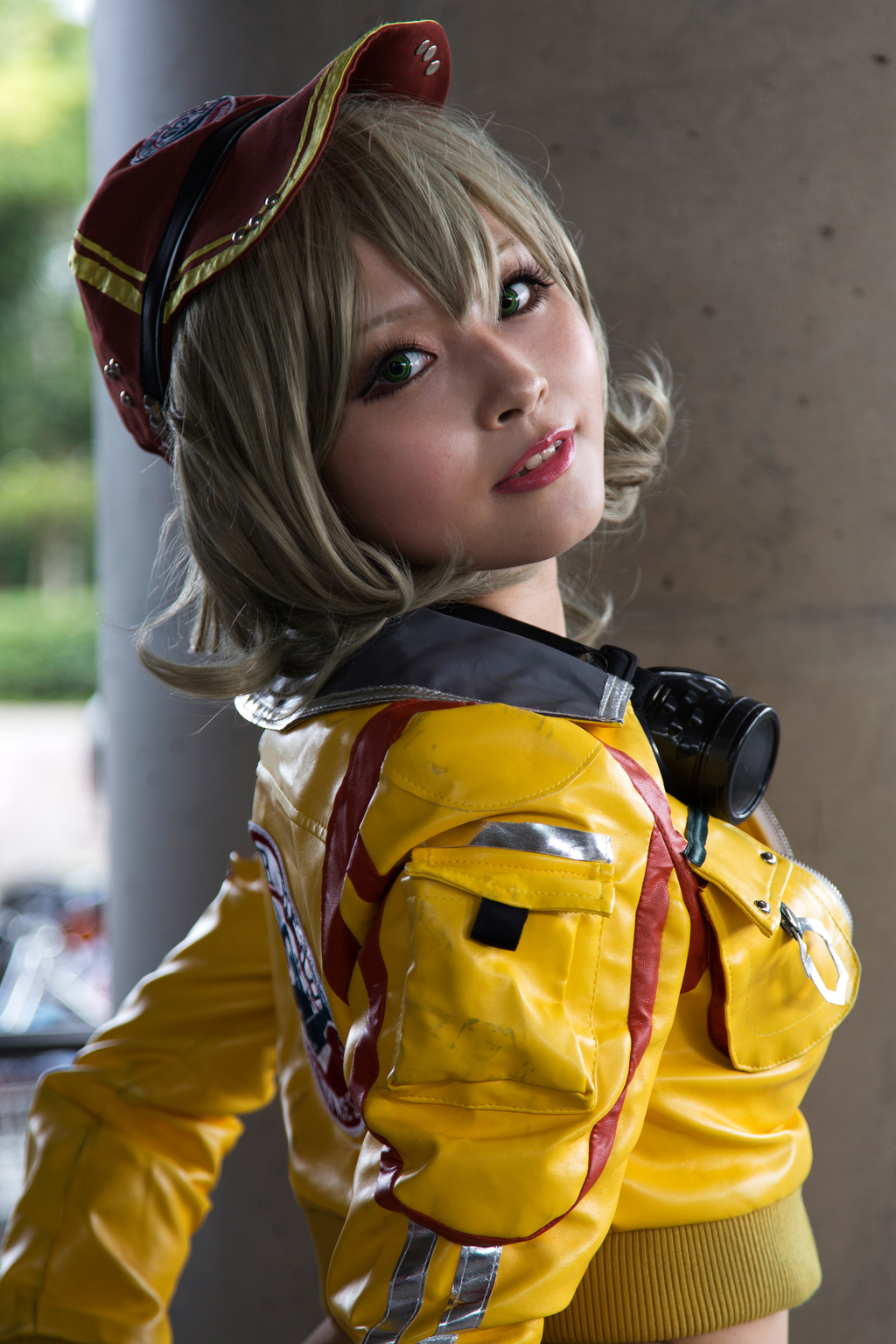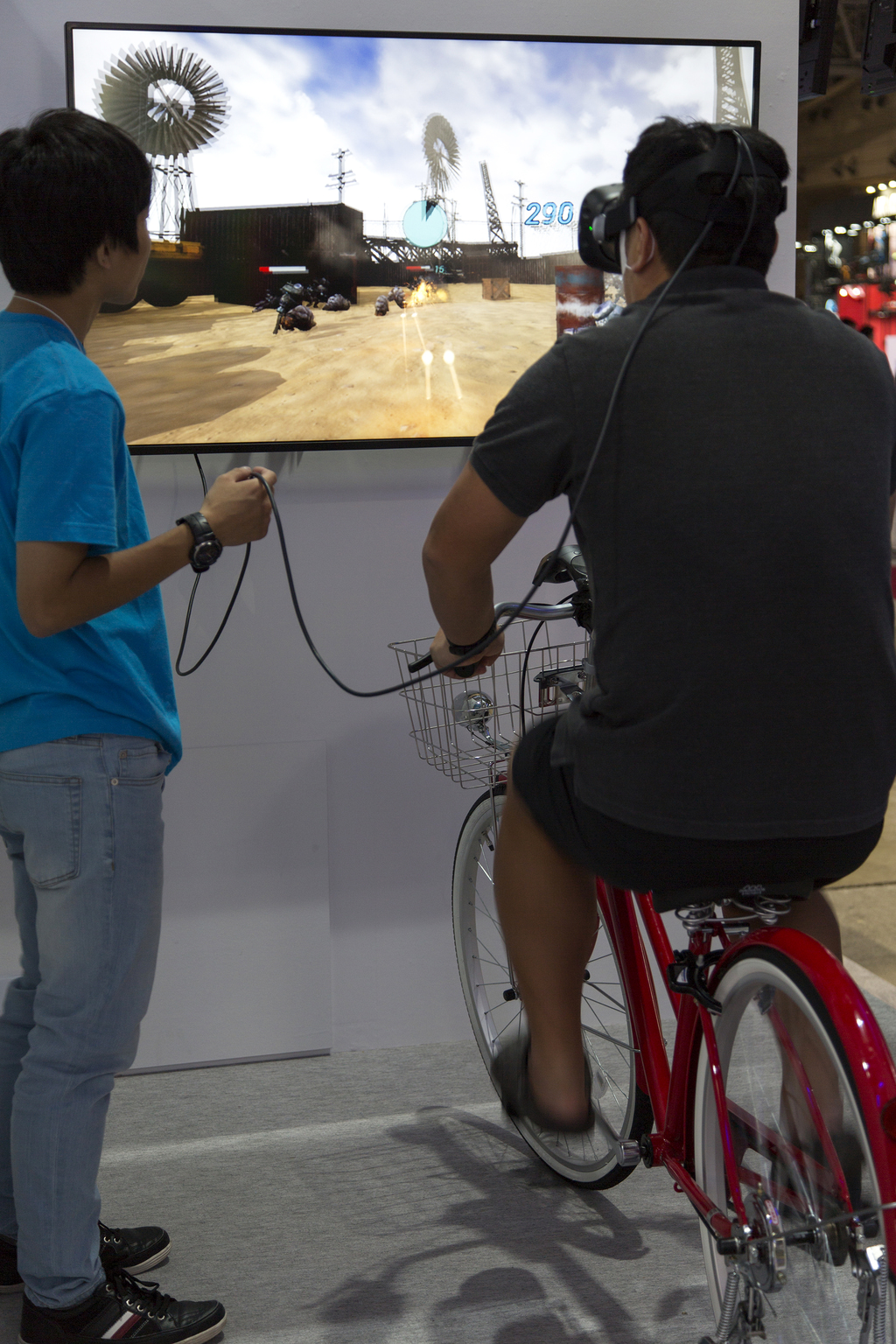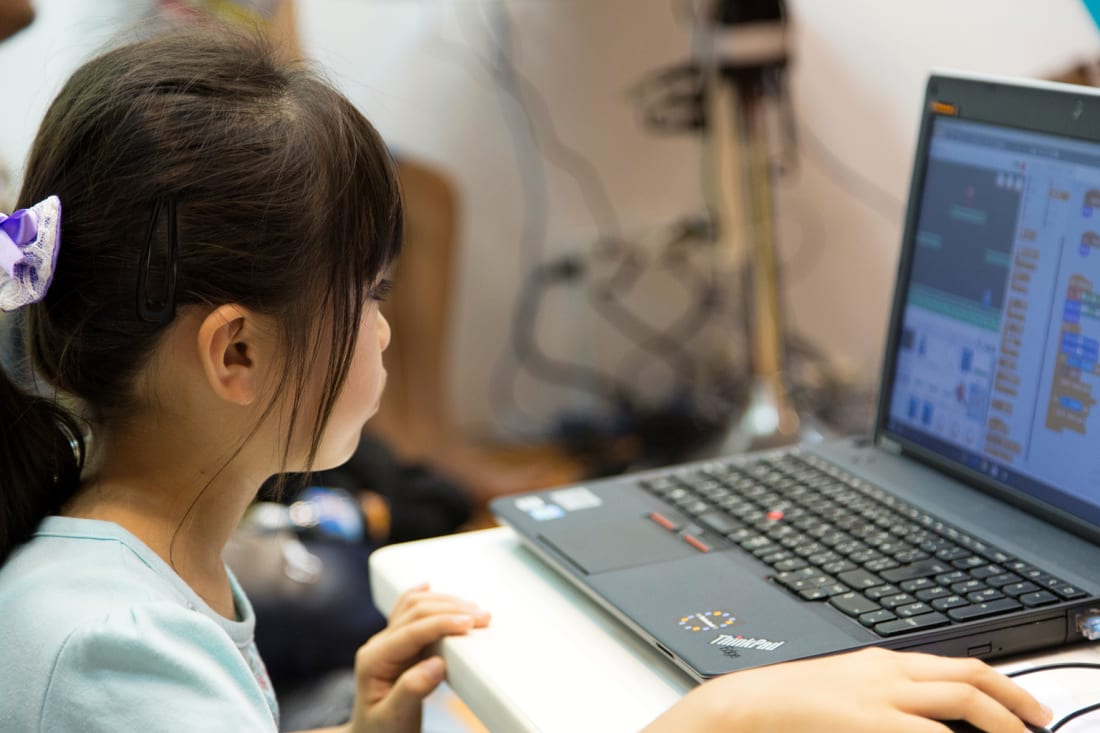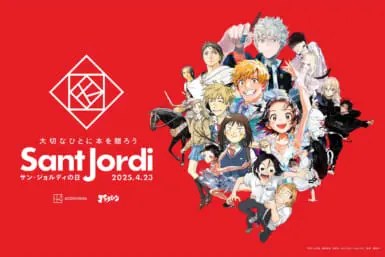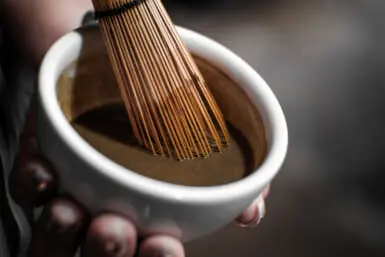As an engineer straps me into a driving simulator and asks me not to touch any wires – it is still a prototype – I am reminded that the Tokyo Game Show (TGS) is about more than just playing games. With so much to do it was difficult to keep up, but here are some of the games, gadgets and spectacles that stood out at Japan’s largest video game expo.
The Gadgets
Virtual Reality (VR) has been around for a while now, which means there are plenty of games to try – if you can afford it. For those of us who cannot, this year saw attendees given the chance to play some older VR titles like Knockout League for PSVR, along with unreleased games like Space Channel Five and Ace Combat 7.
But my favourite hardware was much lower budget. Games like RotoRing, which consisted of a set of lights, one button, and a knob that turns. Or Hako dake no Blues, a game where the character, wearing only a cardboard box, has to walk home without being spotted. The controller was simply a box the player hid in whenever someone appeared on screen.
These smaller games were short and simple but a lot of fun, making them the perfect counterpart to the million dollar prototypes.
The E-Sports Arenas
Shows like TGS are great for seeing the biggest games, but they are even better for discovering something new. For me, this year’s biggest discovery was Japanese e-sports.
Streaming and competitive gaming have been around for a while, but as with most modern Japanese sub-cultures, Japanese e-sports do not get much coverage outside of Japan. The games that drew the biggest crowds were fairly typical, with fighting games like Tekken and shooters like Player Unknowns Battlegrounds making an appearance.
Even though most of the lineup was fairly standard, there was still a surprise in the form of competitive Puyo Puyo Tetris. Who knew that a competitive Tetris game could draw a crowd in 2018?
All The Cosplay
Walking around the cosplay area was like walking around an entirely different event. Characters from games old and new were everywhere with 2B from Nier proving popular, although nostalgia fuel like Evangelion’s Rei showed that the classics still have life.
Trying to name some of the more obscure characters was a blast and despite not being the main attraction, the cosplay area was a great reminder that games are, at the end of the day, about enjoying yourself.
The Student and Indie Games
Universities and technical colleges were given a lot of space to demonstrate their students’ work, which was great because many of their games were truly unique. Games like MamaChariot, a bike riding game in VR, or Alpha Code, a game where you shout into a microphone to shoot, were perfect examples of students making games just for fun.
Though not all the student games were trying to be quirky. Projection Remains, a puzzle game made by students at Nihon Kogakuin College was a more traditional platformer designed around changing the environment to complete levels. There were countless smaller projects that could only be played on the show floor, displaying a unique slice of modern Japanese gaming that may never be released publicly.
The indie section was just as varied with contributors from around the world. It also has the added draw that the games are more than just concepts and the developers are usually standing next to their games waiting for feedback, so you can tell them exactly what you think!
The Family Area
The family area was a quieter space for children to play, showcasing games that are better suited for a younger audience. This year’s standout was an area to get kids interested in programming by helping them make their own games. There were plenty of staff around for when they got stuck and everyone was making simple space invader style games in no time. Hopefully a few of the youngsters will be inspired to exhibit their own games one day.
The Tokyo Game Show is an enormous event that showcases the biggest domestic and foreign games, but more than that, it is a chance for people to geek out and enjoy their hobby. With space for kids, e-sports, demos and cosplayers, this year had a little something for everyone.

